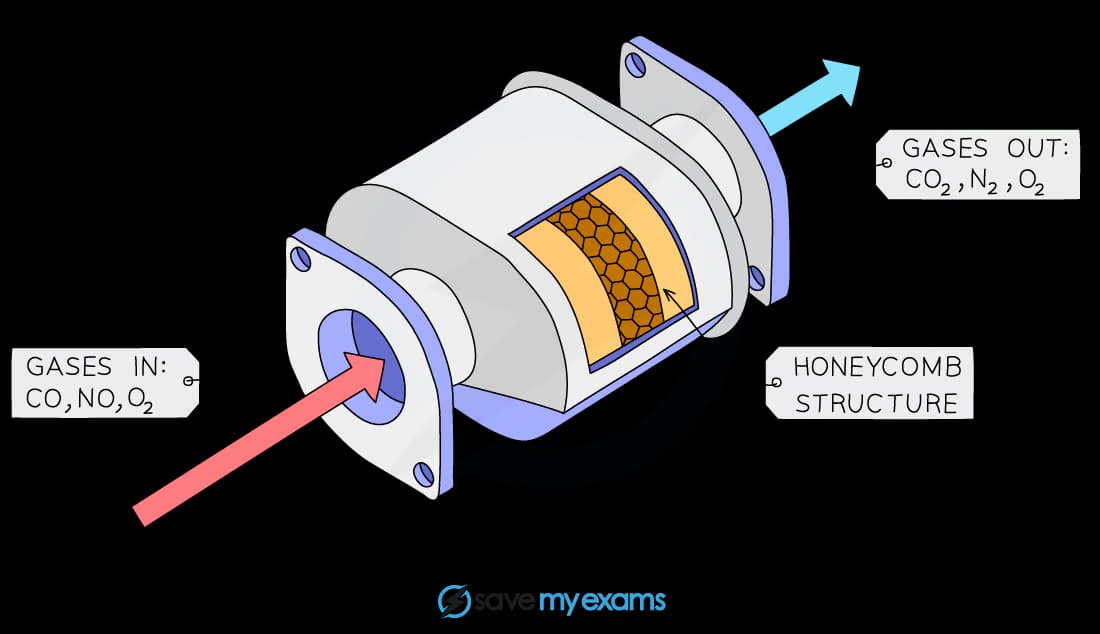Transboundary Pollution (DP IB Geography) : Revision Note
Case Study: Acid Rain
Transboundary pollution (TBP) is defined as "pollution that originates in one country but, by crossing a border through pathways of water or air, is able to cause damage to the environment in another country" (OECD)
Air pollution is the release of chemical particulates into the atmosphere
Acid deposition occurs when sulphur dioxide and nitrogen oxides are released into the atmosphere
These gases undergo chemical reactions and transform into secondary pollutants, resulting in both dry and wet acid deposition called acid rain

Causes of dry and wet deposition of acid rain
Dry deposition occurs close to the source of the pollution and is usually in the form of particulate matter
Wet deposition happens when the pollutants dissolve in precipitation and fall at a distance from the source
It is these wet depositions that cross international boundaries and, therefore, form transboundary pollution
What is acid rain?
All precipitation is naturally acidic as it absorbs carbon dioxide in the atmosphere
This becomes a weak carbonic acid with a pH of between 5 and 6
Acid rain is precipitation that has a pH of less than 5.5
Human activity, such as burning fossil fuels, produces oxides of nitrogen (NOx) and sulphur dioxide (SO2), which are released into the atmosphere
Coal-fired power stations are major contributors to SO2 emissions, while NOx emissions are mainly from vehicle exhausts
Sulphur oxides have the greatest impact, accounting for 2/3 of the problem
Global emissions of SO2 are declining; however, NOx emissions are increasing with car ownership
Examiner Tips and Tricks
If you are going to write about acid deposition/acid rain, you must remember to write about wet and dry. Wet deposition is transboundary, but dry deposition is not usually transboundary.
Impacts of acidification
Acid rain and the dry deposition of acidic particles contribute to the corrosion of metals, such as bronze and rocks, such as limestone
These effects significantly reduce the societal value of buildings, bridges, and cultural objects such as statues and monuments
Dry deposition of acidic compounds can also dirty buildings and other structures, leading to increased maintenance costs

Acidic deposition, particularly in bodies of water, directly affects aquatic organisms such as fish, amphibians, and invertebrates
Acidic deposition lowers the pH of the water, making it difficult for some species to survive and reproduce

Acid deposition directly falls on leaves, causes leaf damage and eventually kills plants
Acid particulates can block stomata (plant pores), preventing gaseous exchange
Coniferous forests, such as pine or spruce trees, are particularly sensitive to acid deposition due to their shallow root systems and thin bark
Acid rain also damages their foliage and inhibits nutrient absorption

Case Study
Acidification in Sweden
Most acidifying pollutants deposited in Sweden have been carried on winds from other countries and international shipping
Most soils in Sweden are poor in limestone and vulnerable to acidification
Over 18 000 lakes in Sweden are acidified, and 4000 of them are seriously affected
Fish stocks in about 9 000 Swedish lakes, mostly in the south and the centre of the country, are also very badly affected
Sweden has aluminium levels of up to 1.7 mg/l, compared to the safe limit of 0.2mg/l
High levels of mercury in fish cause health problems when eaten
Acid rain has a negative impact on forests and trees.
Sulphur dioxide interferes with the process of photosynthesis
Removing a whole tree can be equivalent to the effects of 60 years of acid rain
Action taken by Sweden
Ever since the late 1960s, Sweden has made efforts to reduce acidification and its effects
Sweden banned the burning of high-sulphur oils in 1969, and then took a number of steps to lower sulphur emissions. Methods included:
More efficient energy use
Increasing the use of nuclear energy, which reduces the need to use fossil fuels
Introducing requirements for flue gas cleaning at combustion plants
In 1991, a tax on sulphur and NOx was imposed further reducing emissions and a few years later, NOx emissions had almost halved
Research by the Swedish Environmental Protection Agency has been significant for environmental protection, particularly in the context of the Convention on Long-Range Transboundary Air Pollution
Sweden has drawn attention to the problem and encouraged other countries to take action
The Swedish Government has spent money and resources to inform citizens and politicians of neighbouring countries about the seriousness of acidification as an environmental threat
Reducing the impacts of acid deposition
There have been various methods to deal with the effects of acid deposition, such as fitting catalytic converters on all cars and using powdered limestone in lakes to increase the pH
However, these are short-term solutions
The most obvious long-term methods are:
Reduce emissions and energy consumption by industry
Encourage the production and use of renewable energies
Remove pollutants before entering the atmosphere
Plant trees to absorb polluted air
Avoid the use of sulphur-rich fuels
Inform the public on the issues of acid deposition and the importance of reducing household energy use
Promote innovation and new technologies to develop efficient and reliable renewable energies


You've read 0 of your 5 free revision notes this week
Sign up now. It’s free!
Did this page help you?

